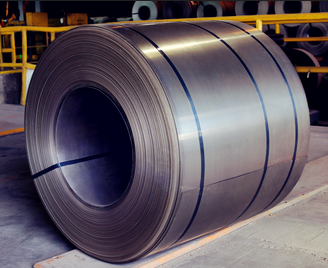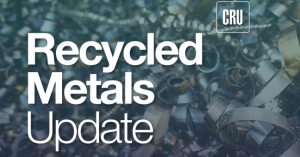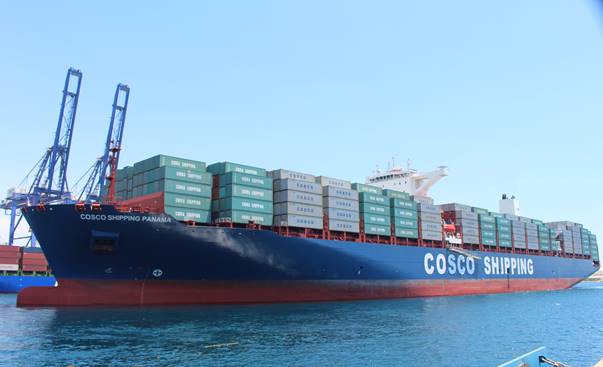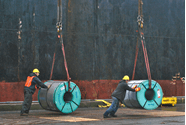
SMU's April at a glance
Steel prices trickled lower across the month of April for both sheet and plate products.

Steel prices trickled lower across the month of April for both sheet and plate products.

The amount of new steel available to the US market, dubbed apparent steel supply, rebounded 7% in March, according to SMU calculations on Department of Commerce and American Iron and Steel Institute (AISI) data.

US steel exports eased through March but remain healthy, having reached a six-month high in February

The election campaign is white-hot right now, and the Biden administration is touting its protectionist message. Just this past week, the Office of the US Trade Representative (USTR) touted this message. In a release entitled “What They are Saying,” USTR quoted many of the usual protectionist groups praising government action against Chinese steel exports and shipbuilding. Consuming industries in the United States, which employ many times the American workers as the industries seeking trade protection, were not mentioned.
If successful in its overtures to Anglo American, BHP will create the world’s largest diversified miner by a country mile. The rationale for this merger is scale and in mining, size matters.
Last week gave us a glimpse into the effect of the 2024 election campaign on trade policy. In a major announcement, the Biden administration pressed the US Trade Representative (USTR) to triple certain Section 301 tariffs on steel and aluminum. It’s a lot to unpack. You can find the full text of the announcement here. […]
Steel sheet prices in many regions of the world were steady week over week in the week ended April 17.
Here’s a roundup of the latest news in the global aluminum market from our colleagues at CRU. Biden calls for tripling of Chinese steel and aluminum tariffs President Joe Biden is calling on the US Trade Representative (USTR) to consider increasing the existing section 301 import duty on Chinese steel and aluminum three-fold. The current […]
North American auto assemblies ticked up in March vs. the prior month, according to LMC Automotive data. While assemblies were up month on month (m/m), they are down 4.5% year on year (y/y).
The Biden administration on Wednesday announced measures to support the domestic steel industry.
The steel market appears to be finding a new, higher normal with the shocks of the pandemic and the Ukraine in the rearview mirror. The good news: a more profitable and consolidated post-Covid US steel industry has been able to invest in operations. That includes efforts to decarbonize. The bad news: That “new normal” could be tested. Because it’s not just domestic sheet prices that have been volatile. Geopolitics are too.

As the ISRI 2024 conference unfolds in Las Vegas, attendees are diving into crucial discussions shaping the future of the recycling industry. Here are the main topics being discussed: New steelmaking capacity coming online this year Export demand during this period Infrastructure spending Supply of pig iron and HBI Current logistics challenges May scrap prices […]

While shipping and supply chains have always been subject to wars, pirates, privateers, geopolitical issues, and natural disasters, it seems that “it’s been busier lately when it comes to dealing with significant supply chain disruptions,” according to logistics expert Anton Posner.

The latest SMU Community Chat webinar reply is now available on our website to all members. After logging in at steelmarketupdate.com, visit the community tab and look under the “previous webinars” section of the dropdown menu. All past Community Chat webinars are also available under that selection. If you need help accessing the webinar replay, or if your company […]

The apparent supply of steel in the US fell 6% from January to February, according to data compiled from the Department of Commerce and the American Iron and Steel Institute (AISI).

The latest US Department of Commerce data shows 840,000 short tons (st) of steel left the country in February. This is the highest monthly export rate since August 2023.

The Biden Commerce Department just issued a broad rewrite of regulations dealing with a host of antidumping and countervailing duty issues. This week, I write about one of those issues, where it looks like Commerce made a wrong turn.

Mercury Resources CEO Anton Posner will be the featured speaker on SMU’s next Community Chat webinar on Wednesday, April 10, at 11 a.m. ET. The live webinar is free. You can register here. A recording of the webinar and the slide deck will be available only for SMU members.

Low manufacturing activity and higher interest rates took a toll on Radius Recycling’s profits during the Oregon-based company’s most recent quarter. Radius reported a net loss of $34 million, or $1.19 per share, during its fiscal second quarter. In the previous quarter, Radius saw a net loss of $18 million, or 64 cents per share.
SMU latest' steel market survey paints the picture of sheet market that has hit bottom and begun to rebound. Lead times are extending again after stabilizing earlier this month. Mills are far less willing to negotiate lower sheet prices - even if there are still deals to be had on plate, according to the steel buyers we canvassed.
A container ship collided with the Francis Scott Key Bridge in Baltimore on March 26, causing it to collapse. This has blocked sea lanes into and out of Baltimore port, which is the largest source of US seaborne thermal coal exports. The port usually exports 1–1.5 million metric tons (mt) of thermal coal per month. It is uncertain when sea shipping will be restored. But it could be several weeks or more. There are coal export terminals in Virginia, though diversion to these ports would raise costs.
SMU’s sheet prices firmed up modestly this week, even as CME hot rolled futures declined. What gives? My channel checks suggest that demand remains stable and that buyers have returned to the market following new HR base prices announced by mills earlier this month. I’m looking forward to seeing whether lead times, which have stabilized, will start extending. SMU will have more to share on that front when we release updated lead time figures on Thursday. As for HR futures, what a reversal! As David Feldstein wrote last Thursday, bulls expected mill price increase announcements. And we briefly saw the May contract climb as high as ~$1,000 per short ton (st).

Mercury Resources CEO Anton Posner will be the featured speaker on SMU’s next Community Chat webinar on Wednesday, April 3, at 11 am ET. The live webinar is free. You can register here. A recording of the webinar and the slide deck are available only SMU members.
APAC steel prices are likely to bottom out in the near term as seasonally higher demand coupled with production cuts may support prices. In the EU, prices are likely to remain under pressure, while fresh price increases are expected in the US. APAC steel prices are likely to bottom out in the near term In […]
As the month of March goes into the second half, the scrap community is trying to cope with the large drop in ferrous scrap earlier this month.
SMU caught up with Barry Zekelman, executive chairman and CEO of Zekelman Industries, on Wednesday’s Community Chat. As one of the largest independent steel pipe and tube manufacturers in North America, his company is also one of the largest steel buyers in the region. This year alone, the Chicago-based company will buy roughly 2.8 million tons of steel. As such, Zekelman provides a great perspective on the steel industry and the markets it serves.
North American auto assemblies edged down in February vs. the prior month, according to LMC Automotive data. While assemblies did fall month on month (m/m), they are up nearly 3% year on year (y/y).
SMU’s price for hot-rolled (HR) inched lower this week. I wouldn’t be surprised, however, if we start to see prices and lead times move higher in the weeks ahead. The modest declines in HR this week are probably the result of lingering deals cut at “old” prices, as sometimes happens after mill price increases. But those deals will probably be out of the market soon if they aren’t already. So why do I float the idea of higher prices? Some big buys have been placed. It reminds me a little of what we saw last fall, when people restocked in anticipation of higher prices once the UAW strike was resolved.

US senators have introduced the "Stop Mexico’s Steel Surge Act," which seeks to reimpose 25% Section 232 tariffs on Mexican steel imports.

The apparent supply of steel in the US increased in January, rising to a five-month high, according to data compiled from the US Department of Commerce and the American Iron and Steel Institute (AISI).